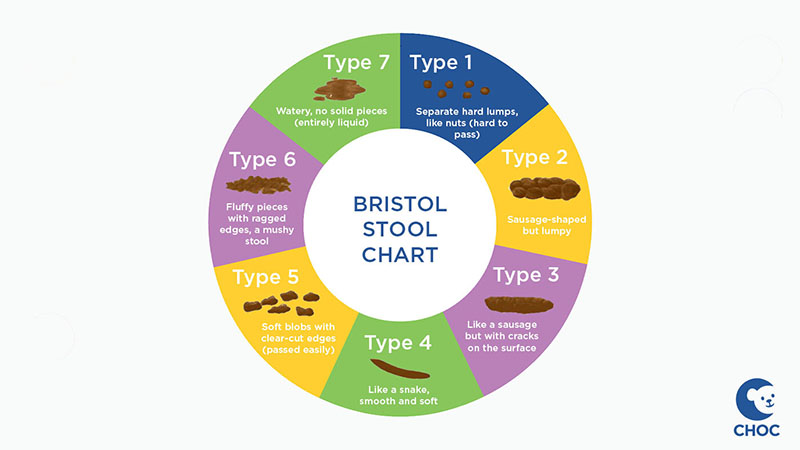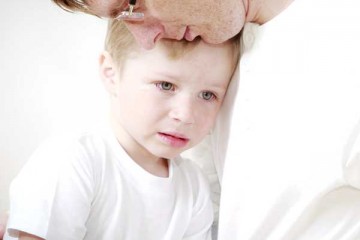What causes constipation in children?
Constipation is typically caused by an external factor or change in diet/lifestyle, but more severe or chronic cases of constipation can be due to an underlying condition. Some of the most common causes of constipation in children include:
- Medications
- Lack of exercise
- Not enough liquids
- Not enough fiber in the diet
- Irritable bowel syndrome
- Ignoring the urge to have a bowel movement
- Changes in habits or lifestyle
- Problems with intestinal function.
Common life events that are linked to episodes of constipation in children include:
- Changing from breast milk to formula
- Introduction of solid foods
- Starting cow’s milk
- Toilet training
- Travel or camping
- Viral illness.
What are the symptoms of constipation in children?
Although each child may experience constipation differently, symptoms can include:
- Less than three bowel movements per week.
- At least one episode of stool leakage per week.
- Withholding behavior: A child actively tries not to go the bathroom. When needing to use the restroom they will clench their bottoms, cross their legs, get red in the face, hide, cry, shake or dance around. Parents sometimes misinterpret this behavior and think that their child is in pain.
- Difficult, painful or hard bowel movements
- Stool that is small and “ball like”
- Feeling bloated or uncomfortable
- Large diameter stools that could clog the toilet
- Presence of a large stool mass in the abdomen or rectum.
- Abdominal pain: The most common cause of abdominal pain in children is constipation. Pain is typically intermittent (off and on) and is relieved after a bowl movement.
- Urine accidents: Constipation takes up a large amount of space in the abdomen, which often leads to dysfunction of the bladder. Along with that, about 10% of children with constipation have recurrent urinary tract infections that can also cause daytime or nighttime urinary accidents. Learn more about urinary tract infections.
- Blood-coated stools: Passage of hard stools can cause anal tears (fissures) leading to blood streaked stools or blood on the toilet paper.
- Behavioral issues: Behavioral problems can result from the pain due to constipation, or the social embarrassment that a child faces due to soiling of their underwear at school or in public places.
Ideally, children should have soft bowel movements each day that resemble Types 3 through 6 on the Bristol Stool Chart.

The symptoms of constipation may resemble other medical conditions or problems. Always consult your child’s physician for a diagnosis.
How is constipation diagnosed?
The following tests and procedures are used to diagnose and find the cause of a child’s constipation:
- Medical history analysis: Your child’s doctor will ask about duration and severity of constipation, as well as any changes in weight, bowel habits or appetite.
- X-ray: Some children may need an abdominal X-ray so that the physician can see the extent of the constipation inside the patient’s body.
- Blood tests: Blood tests may be ordered for some children to look for signs of infection or other underlying illness.
How is constipation treated?
Mild constipation may be treated with dietary changes. Increased fiber in the diet along with normal water or fluid intake may soften the stools. Fruit juices made from prunes, apples, peaches and pears can be used due to their high sorbitol content. Sorbitol works as a mild osmotic (water retaining) laxative. It is important to note that most of the water we drink is reabsorbed in the colon and is not available to soften the stools; therefore it is not necessary to drink tons of water. Learn more about the amount of water children should drink each day. Children with soiling or more severe constipation usually require medication. However, making changes in your child’s diet at the same time may help wean them from medications more quickly. Getting children, especially toddlers, to change their diet may be a tough task but the extra effort will lead to happier symptom-free children.
What are good fiber sources?
There are a variety of foods that can be great sources of fiber in a child’s diet:
- Fiber-enriched cereals
- Whole grain items
- Whole wheat items (such as whole wheat bread)
- Fiber-rich granola bars or cereals
- Oats
- Beans
- Vegetables, especially green leafy vegetables
- Fruit, especially apples, raisins, pears, prunes and figs.
Why is it important to treat constipation?
Constipation results in much more than a child not being able to “go.” Therefore, eliminating a child’s constipation may also:
- Reduce the child’s urinary tract infections, as about 10% of children with constipation have recurrent urinary tract infections. Learn more about urinary tract infections.
- Reduce abdominal discomfort.
- Reduce episodes of incontinence. Constipation takes up a large amount of space in the abdomen, which often leads to dysfunction of the bladder. This can cause incontinence, urgency of urination, frequency of urination or a sensation of having to urinate when there is little or no urine to urinate. Learn more about incontinence.
- Reduce the amount of daytime urine accidents, as one-third of constipated children experience daytime incontinence (urine accidents).
- Improve the child’s vesicoureteral reflux, as constipated children with reflux are more likely to have breakthrough infections. Learn more about vesicoureteral reflux.
- Decrease a child’s stool accidents and stool leaking. Often stool accidents (known as encopresis) is actually a sign of constipation. Families should make an appointment with their child’s doctor to get help determining if the child’s diarrhea may actually be stool leakage due to constipation.













